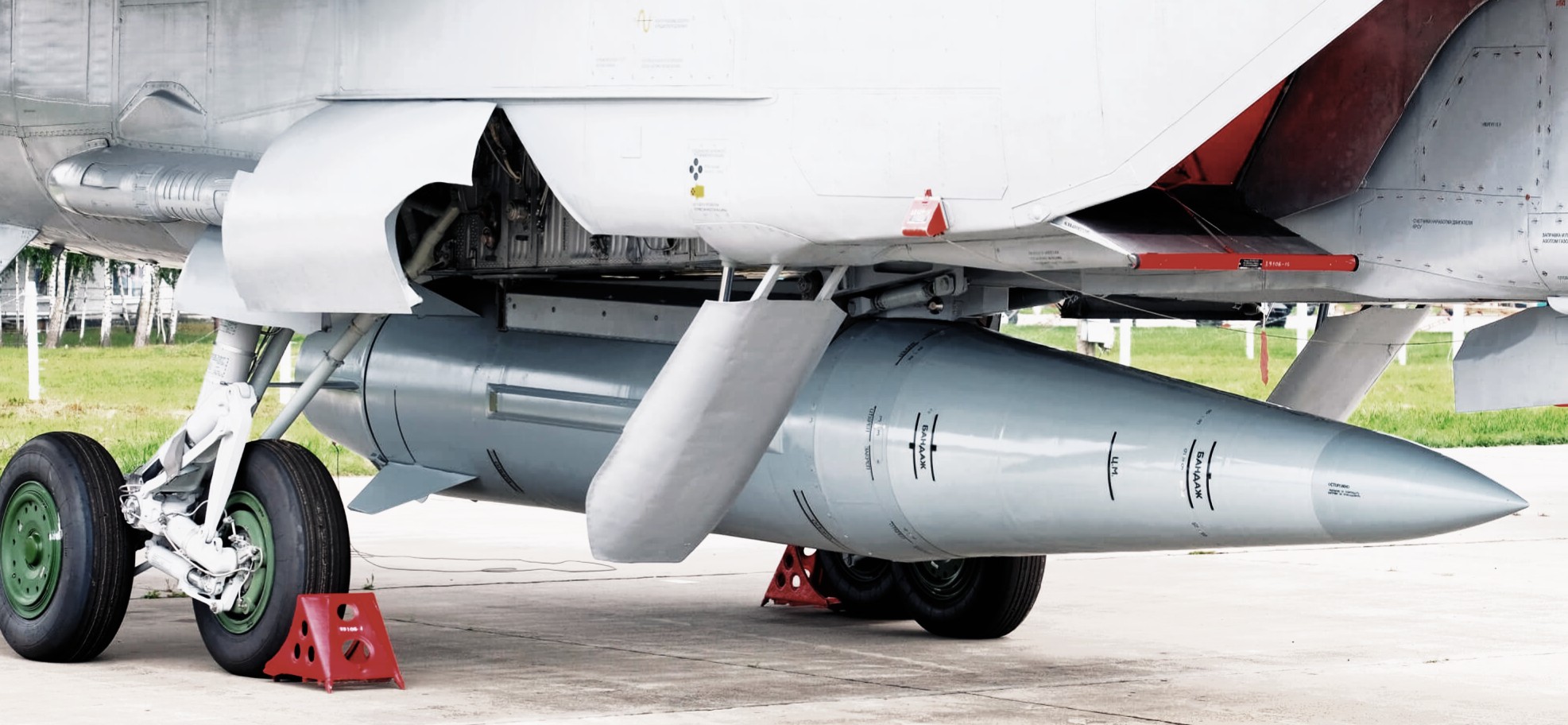(VIDEO) Russia Releases Rare Footage of Kinzhal Hypersonic Missile Launched from MiG-31K in Ukraine Strike
Such footage is seldom made public, likely due to the highly classified nature of hypersonic weapon deployments and the strategic sensitivities surrounding the operational use of one of Moscow's most advanced air-launched strike systems.
Russian authorities have released a rare and highly scrutinized video showing the launch of a Kinzhal hypersonic missile by a MiG-31K interceptor jet against an undisclosed target in Ukraine.
Such footage is seldom made public, likely due to the highly classified nature of hypersonic weapon deployments and the strategic sensitivities surrounding the operational use of one of Moscow’s most advanced air-launched strike systems.
The Kinzhal hypersonic missile—officially designated as Kh-47M2—has become a signature weapon in Russia’s hypersonic arsenal, developed to bypass Western missile defences and deliver high-speed precision strikes at previously unthinkable speeds.
Originally evolved from the 9K720 Iskander-M ground-launched ballistic missile, the Kinzhal was reconfigured into an air-launched format, significantly increasing its effective range, altitude, and survivability through high-speed deployment platforms.
Russia’s chosen platform for the Kinzhal is the MiG-31K, a supersonic, high-altitude interceptor designed during the Soviet era but heavily modified to carry a single Kinzhal missile beneath its fuselage in place of its cannon.
With the Kinzhal, the MiG-31K transforms into a mobile hypersonic missile battery, capable of launching strikes from over 2,000 kilometers away in mere minutes, with almost zero warning to the adversary.
Video Player
00:00
00:00
Speed and Range: Hypersonic Lethality at Mach 10
The standout feature of the Kinzhal is its staggering velocity—reportedly reaching Mach 10, or approximately 12,350 km/h (7,673 mph)—depending on launch conditions.
This speed reduces enemy response windows to near zero, making the Kinzhal exceedingly difficult, if not impossible, to intercept using existing missile defence systems such as the Patriot PAC-3 MSE or Israel’s David’s Sling.
The Kinzhal’s estimated operational range varies between 1,500 km and 2,000 km, with potential extensions when launched from longer-range strategic bombers like the Tupolev Tu-22M3 or Tu-160 Blackjack.
This range places key NATO infrastructure, military bases, airfields, and carrier strike groups well within its potential strike envelope—especially in the European and Middle Eastern theatres.
Warhead and Payload: Conventional or Nuclear
The Kinzhal is dual-capable, able to deliver both conventional high-explosive and nuclear warheads, giving Russia a significant escalation advantage in hybrid or full-scale conflicts.
Its payload is estimated to weigh around 500 kg, with nuclear options speculated to yield between 100 and 500 kilotons—many times the destructive power of the Hiroshima bomb.

For conventional strikes, the Kinzhal is engineered to engage hardened military infrastructure such as airbases, command centres, underground bunkers, naval vessels, and missile defence systems.
Its ballistic trajectory, coupled with limited glide manoeuvring capability, makes it highly unpredictable and able to bypass pre-programmed interception tracks.
Guidance, Accuracy, and Flight Profile
Despite its speed, the Kinzhal is not a mere brute-force weapon—it’s believed to incorporate inertial navigation systems (INS) supported by GLONASS, Russia’s satellite-based navigation equivalent to GPS.
While exact details remain classified, Russian sources claim a circular error probable (CEP) of under 1 metre, though Western military analysts estimate a more realistic CEP in the 5–10 metre range—still highly precise for a ballistic hypersonic missile.
Its flight path includes an initial ballistic phase, followed by high-speed cruise or terminal dive, possibly with some manoeuvrability, although far less than hypersonic glide vehicles (HGVs) like China’s DF-ZF or the U.S. Hypersonic Glide Body (C-HGB).
Launch Platforms: MiG-31K and Beyond
At present, the MiG-31K remains the primary carrier for the Kinzhal, chosen for its high-speed and high-altitude characteristics critical to achieving optimal missile performance.
Each MiG-31K can carry a single Kinzhal missile, and operational units are reportedly based in Russia’s Southern Military District, within range of Ukraine and NATO’s eastern front.
Russia has conducted multiple tests involving Tu-22M3 strategic bombers and is developing integration with the Tu-160, which would extend the missile’s reach to intercontinental distances.
Deployment aboard naval platforms or mobile surface launchers has also been speculated but remains unconfirmed.
Combat Use in Ukraine: Real-World Hypersonic Warfare
The Kinzhal has seen repeated combat use in Ukraine since the full-scale invasion began in February 2022, marking the first known wartime employment of hypersonic missiles.
Russia has claimed successful strikes against deeply buried Ukrainian targets, such as bunkers, ammunition depots, and command-and-control centres, often beyond the reach of conventional cruise missiles.
However, in a historic countermeasure, Ukrainian forces—using U.S.-supplied Patriot missile batteries—claimed in May 2023 to have successfully intercepted several Kinzhal missiles, drawing global attention and challenging the perceived invincibility of the system.
U.S. officials supported Ukraine’s claims of interception, citing sensor and radar data, though Russian defence sources continue to dispute those reports.
Geo-Strategic Impact and Escalation Potential
The emergence of the Kinzhal has significantly shifted global missile deterrence dynamics, demonstrating Russia’s ability to deploy operational hypersonic systems ahead of the United States and its NATO allies.
As a first-strike or standoff weapon, the Kinzhal complicates conventional deterrence and threatens to compress decision-making timelines during crises, thereby increasing the risk of miscalculation and escalation.
It also underscores Moscow’s growing investment in asymmetric warfare tools, designed to offset NATO’s technological edge in other domains such as airpower and missile defence.
The Kinzhal forms part of Russia’s broader strategic triad modernization, which includes systems like the Avangard hypersonic glide vehicle, RS-28 Sarmat ICBM, and Poseidon nuclear-powered torpedo.
Limitations and Criticism: Not a Perfect Weapon
Despite its advertised capabilities, the Kinzhal is not without criticism and limitations.
It lacks the glide manoeuvrability and sustained lift seen in next-generation HGVs, prompting debate over whether it qualifies as a true hypersonic glide missile or merely a high-speed ballistic projectile.
Moreover, it is non-reusable, requires specialized launch platforms like the MiG-31K, and comes with a high unit cost—estimated at USD 10 million (RM47 million) per missile, making mass deployment economically unsustainable.
Additionally, the limited availability of modified MiG-31K aircraft—believed to be only a few dozen—restricts Russia’s ability to deploy the Kinzhal en masse across multiple theatres.
Conclusion: A Technological Breakthrough with Strategic Teeth
The Kh-47M2 Kinzhal represents a significant leap in Russia’s pursuit of hypersonic dominance, providing the Kremlin with a high-speed, precision-guided weapon capable of penetrating even the most advanced air defences.
Its use in Ukraine has provided a real-world testbed for hypersonic warfare, making Russia the first nation to employ such a weapon in active combat—setting a precedent that others will likely follow.
As the global arms race in hypersonic technology accelerates, the Kinzhal stands as both a symbol of Russia’s technological prowess and a warning of the evolving threats in 21st-century high-speed conflict.


